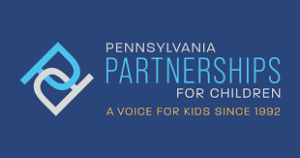End of PHE Could Cut Kids From PA Medicaid Rolls
When the formal COVID-19 public health emergency ends, as many as one out of every four Pennsylvania children enrolled in Medicaid could lose their state-sponsored health insurance, according to new research by the Pennsylvania Partnership for Children.
 During the PHE, the number of uninsured children in the state fell from 4.6 percent to 4.4 percent, but some of that improvement could be reversed as the state begins to redetermine the eligibility of more than 3.5 million people currently on the state’s Medicaid rolls after a more than two-year hiatus in eligibility reviews. Today, more than 1.4 million children in Pennsylvania are enrolled in Medicaid or CHIP.
During the PHE, the number of uninsured children in the state fell from 4.6 percent to 4.4 percent, but some of that improvement could be reversed as the state begins to redetermine the eligibility of more than 3.5 million people currently on the state’s Medicaid rolls after a more than two-year hiatus in eligibility reviews. Today, more than 1.4 million children in Pennsylvania are enrolled in Medicaid or CHIP.
Even with the PHE-inspired improvements, 5.5 percent of children in the state who qualify for some kind of free or subsidized health insurance remain uninsured, according to the research.
Uninsured children, like the uninsured population at large, are far more likely than not to be treated by Pennsylvania’s safety-net hospitals such as those that belong to the Safety-Net Association of Pennsylvania (SNAP). As a result, any reduction in the rate of uninsured children would have a correspondingly damaging effect on the financial health of those safety-net hospitals – and potentially, on the residents of the medically vulnerable communities those hospitals serve.
Learn more about how the end of the PHE may affect health care coverage for Pennsylvania children in the Pennsylvania Capital-Star article “Report: Ranks of uninsured Pa. kids dropped during pandemic.”
 Among the subjects addressed in the group’s report 2021 State of Children’s Health Care in Pennsylvania: Health Insurance During the COVID-19 Pandemic are the increase in the number of insured children in the state as a result of the current public health emergency; the impact of the pandemic on children receiving their childhood immunizations; the major role Medicaid and the Children’s Health Insurance Program (CHIP) play in insuring children in the state; the implications of the end of the declared public health emergency; and more.
Among the subjects addressed in the group’s report 2021 State of Children’s Health Care in Pennsylvania: Health Insurance During the COVID-19 Pandemic are the increase in the number of insured children in the state as a result of the current public health emergency; the impact of the pandemic on children receiving their childhood immunizations; the major role Medicaid and the Children’s Health Insurance Program (CHIP) play in insuring children in the state; the implications of the end of the declared public health emergency; and more.